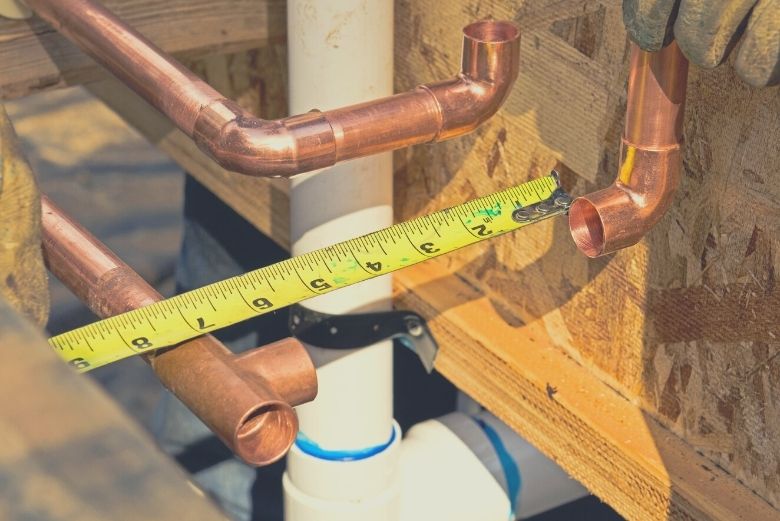Are you adding a bathroom in the basement or need to move some water supply lines around? If you do your own plumbing work and sweat pipes, you’ll have your own torch but may need some solder. Many DIY’ers want to learn how to do their own plumbing work and this is a great way to learn. Always maintain respect for the skilled trades but sometimes there are small jobs that you can do yourself. Let the professionals do the medium to large jobs. Ready to see the best solder for sweating those copper pipes? Let’s get right to it!
| Image | Title | Price | Prime | Buy |
|---|---|---|---|---|
Top Top
Top Top
Top | Oatey 50684 Safe-Flo Silver Plumbing Kit | PrimeEligible | Buy Now | |
 Top
Top Top
Top | Katzco Pipe Cleaner Tool - 4 in 1-10.6 Inches - Cleans Inside and Outside - for Plumbing Installation, Soldering, Copper Pipes, Tubes, Brazing, and More | PrimeEligible | Buy Now | |
 Top
Top Top
Top | RIDGID 32975 Model 103 Close Quarters Tubing Cutter, 1/8-inch to 5/8-inch Tube Cutter | PrimeEligible | Buy Now | |
 Top
Top Top
Top | Oatey Company 30374 1.7 Oz #95 Flux | PrimeEligible | Buy Now |
What you can expect to read:
Why is it Called Sweating Pipes?
Copper pipes are still in the majority of homes today even though new home construction is moving to PEX piping for water delivery. In order to join pipes together it’s necessary to solder the joints together so they don’t leak water. The water pressure inside a typical house should be between 40 psi and 80 psi. If there was a leak you’d have a lot of water exiting and making a large mess.
To join copper pipes together it helps to add a paste called flux to the ends. Flex essentially keeps the copper from oxidizing as it heats up. When flux heats up it will begin to bubble or sweat. The pipes can look like they’re sweating!
One tip, look for a tinning flux which has powdered solder inside. The alternate type of flux is water based. If you overheat a water based flux it can sometimes leave a mark or residue on the pipes and you’ll never get a good fit!
What Type of Solder is Used for Copper Pipe?
Lead free solder is best for copper pipes carrying drinking water. It will be free of elements you don’t want entering your drinking water. However it will require a higher melting point than a 50/50 solder.
How Do You Solder Copper Pipes Together?
1. Clean the inside of each fitting with a wire brush
2. Clean the outside of the pipe with steel wool
3. Apply a small amount of flux to the pipe
4. Prepare 6-8 inches of solder
5. Heat the pipe using a torch until the flux sweats or bubbles
6. Apply the solder to the pipe. If the solder doesn’t melt, the pipe needs to be hotter
7. Keep adding solder until the entire joint is covered
8. Clean the pipe with a cloth
Do You Need Flux to Solder Copper Pipe?
Flux is not necessary but it’s very difficult without it. Without flux, the copper will oxidize as it heats up and will prevent a good fit as you put the fittings on the pipe. The flux will prevent the oxidation process from starting and allow the pipe to heat up so you can melt the solder when you add it to the pipe.
How to Solder Copper Pipe
Curated Independent Reviews
One verified user on Amazon has been using Oatey solder for many years and has not run in to any issues. His main application has been in the crawl space beneath his home. He likes this product because it’s non-toxic for your water.
One user replaced his water heater himself to save on large plumbing bills. The only additional thing he needed was a propane torch.
Video from Oatey
Oatey Company Profile
Oatey is an ISO certified company that manufactures plumbing products in the United States and around the world. LR Oatey started the company in 1916 and they have continued to expand and enter new markets over the years. Headquartered in Ohio, the company continues to open distribution centers and supply chain services.
In Conclusion
If you’re doing your own plumbing work at home and need to add a faucet or add a valve, this lead free solder is the best for your application. Oatey is well known in the industry and makes one of the best consumables on the market.
- Meets ASTM Standard B-32 and the requirements of the Safe Drinking Water Act.
- Formulated for plumbing/potable water line applications.
- Copper, bismuth, tin and silver alloy
- 420°F - 460°F melting range
- Lead free solder
Prices pulled from the Amazon Product Advertising API on:
Product prices and availability are accurate as of the date/time indicated and are subject to change. Any price and availability information displayed on [relevant Amazon Site(s), as applicable] at the time of purchase will apply to the purchase of this product.


